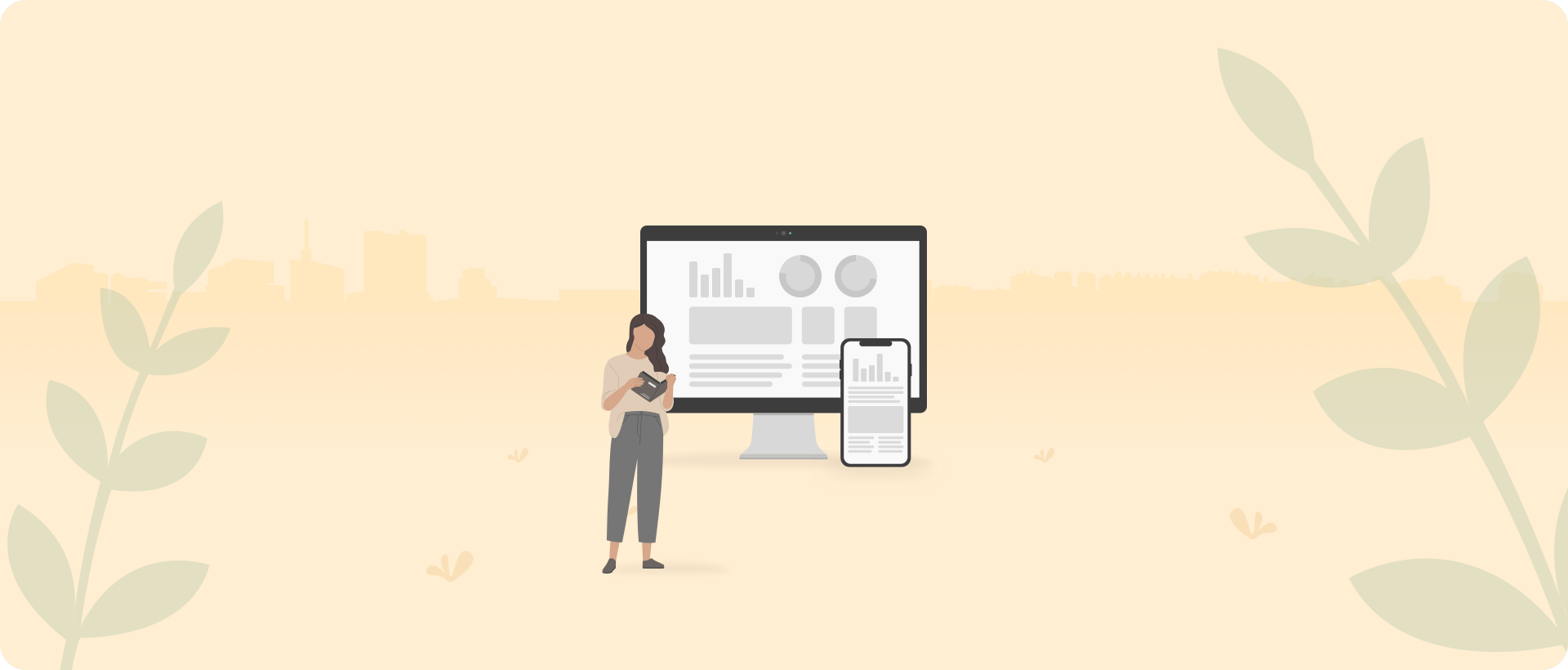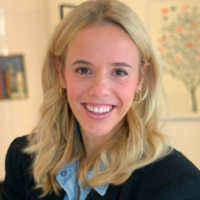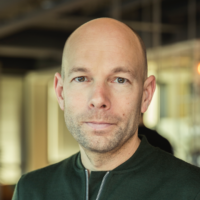Hiring the right candidates efficiently is mission-critical for talent-driven organizations like BPOs, which rely on entry-level agents to be the face of their business. To do this, talent teams need to select and engage top talent before their competitors. However, most organizations make the mistake of putting the vacancy first, and the candidate second.
Traditional recruitment, where candidates apply and are scored against criteria for a specific job, can be effective as long as the criteria and scoring method are accurate. However, when it comes to high-volume recruitment, there is another approach that can better optimize your talent pool.
Rather than centering candidate selection methods around the vacancy, you should center it around the talent. Especially because entry-level candidates are prone to apply to more than one role at a time, to maximize their chances at job security. By adopting a talent-based recruitment strategy, you can benefit from this by providing applicants a chance to be matched to multiple roles with just one application process.
How, you may ask? Let’s take a look at the traditional approach, and the benefits of call-type matching.
What’s in?
What is vacancy-driven matching?
Vacancy-driven matching is a traditional approach to recruiting where selection procedures are built around specific role criteria, and applicants apply and are assessed for a specific role. The approach is centered around a specific job, and the demand to fill a specific vacancy.
At a BPO, for example, this could look like having multiple, separate requisitions for different agent types: such as inbound sales, IT support, and live chat agents.

Candidates who are interested would select and apply for a specific requisition, and be hired based on whether or not they meet the criteria for it. Recruiters screen candidates role-by-role, meaning they may end up reviewing the candidate multiple times if they applied for more than one open position.
In many instances, this can work. If the criteria for the job are clearly laid out, and candidates are assessed on the skills they’d need for success in the role, you can identify the right candidate. However, the process is very inflexible and often relies too heavily on a candidate’s past performance as a predictor of future success. Not to mention, this way of recruiting isn’t built to handle thousands or hundreds of thousands of applicants.
The main drawbacks of this strategy are clear when you look at volume hiring. Most BPOs are hiring thousands or tens of thousands of agents quarterly, and volume recruitment is very different from regular recruitment.
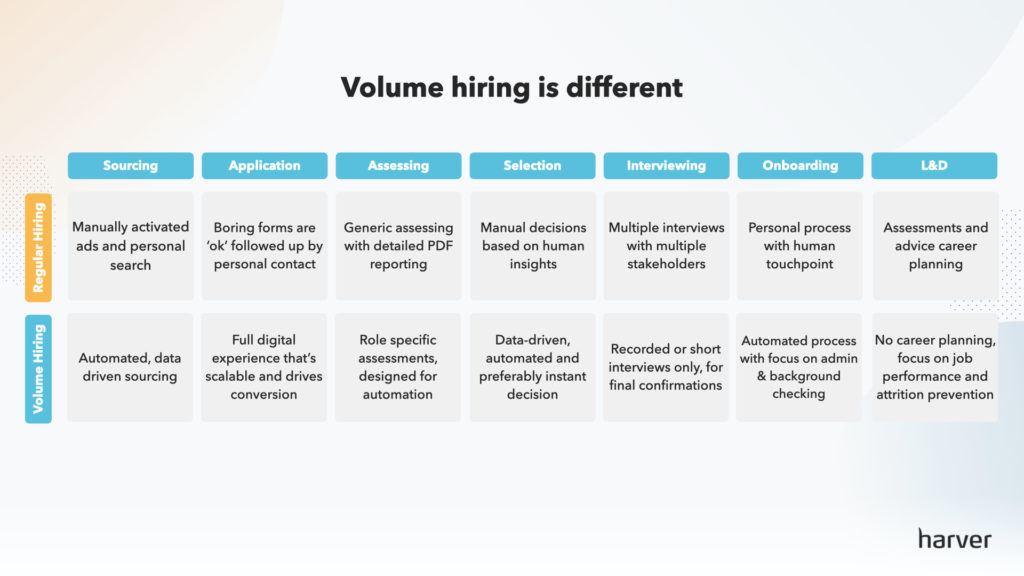
First, a vacancy-driven matching strategy limits your ability to maximize your talent pool, particularly when candidates are a better fit for a different role than the one they applied for. For example, if a candidate applies for IT support, but they would’ve been a stronger fit for outbound sales, the candidate’s journey ends if they’re rejected for the role they applied for.
In addition, it also requires recruiters to manage multiple high-volume hiring processes with siloed talent pipelines and diverse selection criteria. In vacancy-driven recruitment, you could end up with 5-10 different hiring processes to manage, which can drain work hours and cause you to miss out on talent that could’ve found a home at your organization.
The good news is that with technology today, not only can each roles’ hiring process be sped up, they can be combined into one selection experience. So, what does this alternative look like?
In the next section, we’ll explore call-type matching and the benefits of a talent-driven approach enabled by matching technology. That being said, let’s dive in.
Like what you see?
Don’t miss out. Subscribe to our quarterly digest to get the latest TA and TM resources delivered right to your inbox.
What is call-type matching?
Rather than funneling candidates into specific vacancies and recruiting role-by-role, talent-based recruitment is centered around the candidate, and identifies which role or roles are best suited for them based on their skills, competencies, and even personality.
Rather than having 5-6 vacancies, each with its own recruitment process and talent pool, in talent-based recruitment you have one process that helps you identify the best opportunities for your talent pool.
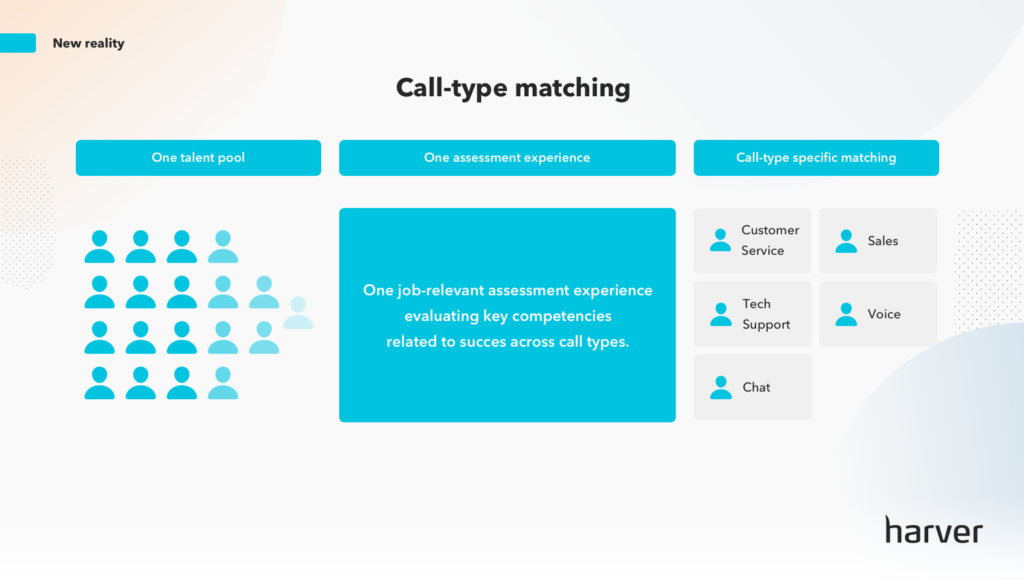
In BPOs, this is most commonly done with call-type matching, where candidates are matched to the most appropriate call-type or support format. Depending on the organization, there can be at least 5-10, if not more, support formats — ranging from phone support to email and chat. Those categories can be even further segmented, by client, industry, or level of service. Because of that variety, it’s far more efficient to allow candidates to apply and be assessed across a variety of role-types at once.
It’s important to note that call-type matching, unlike vacancy-driven matching, must be enabled by technology. A recruiter won’t be able to tell from a single resume or phone screening which role a candidate will be the best fit for, especially if they need to process hundreds of candidates to meet the demand for staff.
Even in the case of vacancy-driven matching, selecting candidates using scientifically validated assessments is much more fair and accurate than relying on resume screening.
Harver clients like Alorica and TTEC service clients across a variety of industries and locations. They have a consistent need for top talent, for example, for both outbound sales and IT support roles to meet client demand for staff. To maintain teams of hundreds, thousands, or tens of thousands of agents, they consistently source, assess, select, and onboard high volumes of candidates.
It’s not always the case that candidates select and apply for the role they’d be most successful in. So, they can assess candidates for a variety of opportunities at once by pivoting away from vacancy-driven matching, towards call-type matching.
In the next section, we’ll take a look at how call-type matching works and what technology can enable it. You can also learn more about this concept by watching the webinar below.
How does call type matching work, exactly?
If you think about a traditional matching process, talent teams select an assessment or set of assessments for each role they’re hiring for, and candidates for that role are scored on the relevant criteria.
This leads to separate, distinct recruitment journeys that don’t impact each other. Candidates who don’t meet the criteria for a specific role or client type are rejected, whether or not they could be a fit for a different role.
In call-type matching, the hiring journeys for the various entry-level roles are combined into one process that matches and sorts candidates. A single assessment experience evaluates all of the relevant competencies and provides job-matching to route candidates to one or multiple roles they’re suited for.

On the recruiter’s end, candidate results appear in the ATS — showing job-match scores for each role, as well as details on how the candidate performed on the underlying assessments. This means that recruiters are able to accurately identify the best talent in an efficient manner, and provide the candidate with the greatest possible chance of getting hired.

Why is call-type matching a better option for high volume hiring?
Volume hiring is a vastly different challenge from traditional recruitment, and often companies with the need to volume hiring are in a consistent cycle of sourcing, selecting, hiring and onboarding new talent. When demand for staff is constant, improving fill rates, speeding up time to hire, and delivering a consistent and pleasant candidate experience is a top business priority.
Asking recruiters to manage a number of slightly varied recruitment processes, often reviewing the same candidates more than once, reduces the effectiveness of your hiring process and can cost you time and talent.
By taking a talent-based approach to recruitment, you’re able to:
- Maximize your talent pool, and reduce mis-hiring
- Provide clients with the best-fit staff to fulfill their support needs
- Offer job security to more candidates, more quickly than competitors
- Reduce manual tasks for recruiters
- Speed up hiring, reducing time any seats sit empty
These goals are common for any recruitment team but are especially important when recruiting at scale. We know from our clients who screen tens or hundreds of thousands of candidates annually that businesses can’t afford to lose talent or work hours due to an inefficient hiring process.
Improving your placement rate benefits your business, and gives you a competitive advantage to scale up for clients quickly without compromising on hire quality. An empty seat can be costly, and call-type matching aims to alleviate that. Not only are you identifying a new hire who can begin sooner, but you’re also improving the chance that they’ll be successful and stay on the team by matching them to the role they’re most suited for.
When competition for talent is fierce, it also gives you a competitive advantage as an employer. Candidates receive job security more quickly, end up in a role they’re the most suited for, and receive fair hiring decisions without a long call-back period.
If a candidate applies and is automatically identified as a strong match for one or more roles, you can even automate the interview scheduling process — meaning you’ll meet and hire the best talent before other organizations have even checked their resume.
Stop guessing,
Start data-driven hiring.
Learn how you implement a modern candidate selection process, that is: streamlined, experience-driven and backed by data.

What roles benefit most from talent-based matching?
At Harver, our bread and butter is helping to improve all things related to high-volume recruitment. Traditional recruitment tools and processes, like vacancy-driven matching and manual resume screening, weren’t built to support the high-volume recruitment processes many companies rely on to find talent.
Companies that stand to benefit from transforming their recruitment the most are the ones who are hiring large numbers of entry level employees, particularly for roles where past experience doesn’t necessarily predict success. This could be cashiers in supermarkets, retail sales associates, or chat support agents at a contact center.
In these roles, the best way to predict success is by identifying the core competencies and skills that high performers typically have, and accurately assessing them during the hiring process. Call-type or talent-based matching is the most valuable for organizations with many entry-level employees performing a variety of similar, but relatively distinct job responsibilities.
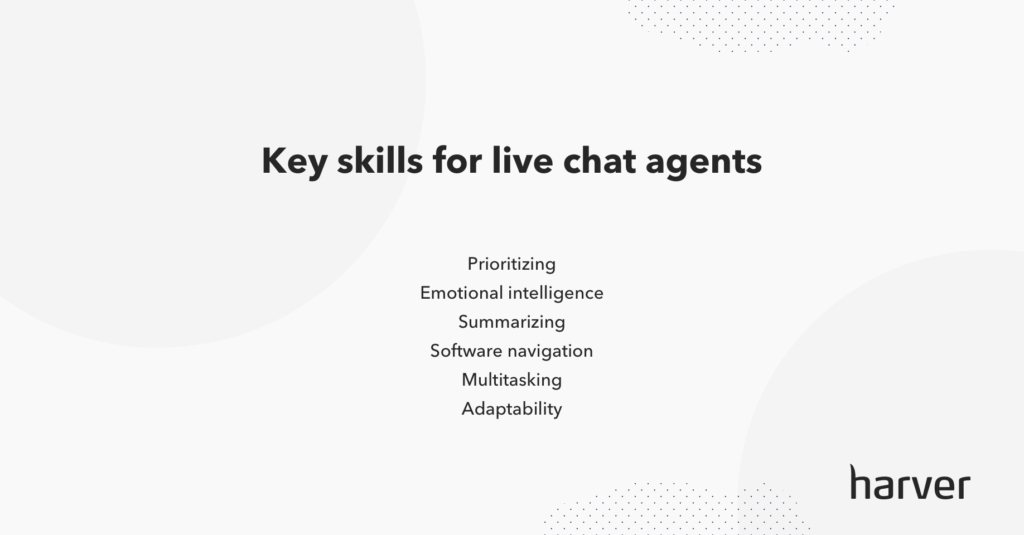
To revisit our examples, in a supermarket most employees except the store manager will be entry level. However, there are different responsibilities between a stock associate and a cashier, and candidates might be more suited to one than the other. In a BPO environment, many agent roles will be entry level, but the skills required for success will vary. For example, a phone agent will require different abilities than a chat agent.
When you take a look at most businesses, even the industries that rely the most on entry level workers — contact centers, restaurants, retail, etc., rely on teams composed of a variety of slightly different roles to keep business moving. Rather than managing a number of distinct recruitment processes, these businesses can funnel all applicants into one experience that identifies where they fit best, reducing time and effort for both parties.
| Vacancy-based matching | Talent-based matching |
| One process per role Finds talent for one job at a time Candidates have to apply to multiple postings to apply to multiple roles Recruiters review each candidate result independently Candidates rejected if they apply for a job they aren’t a fit for | One process for all roles Finds jobs for as many candidates as possible Candidates can apply for several roles at once All candidate results in one place for review Maximizes possibility of finding a match |
Next steps
When we look across our client base, BPOs and contact centers using call-type matching have faster time to fill, reduced turnover, and more a positive candidate experience. Call-type matching is one part of a larger trend towards digital-first hiring that is helping companies scale their recruiting efforts, without needing to scale their HR headcount in kind.
If you’re ready to see how call-type matching would impact your recruitment process, our team would love to connect with you.
Ready to transform your hiring process?
